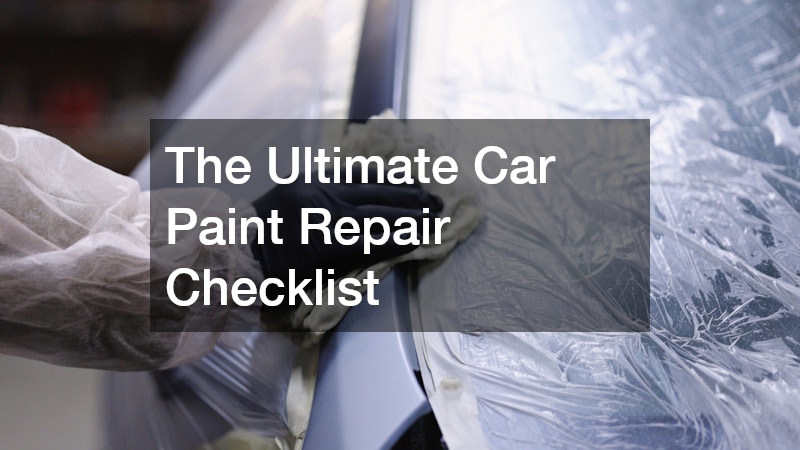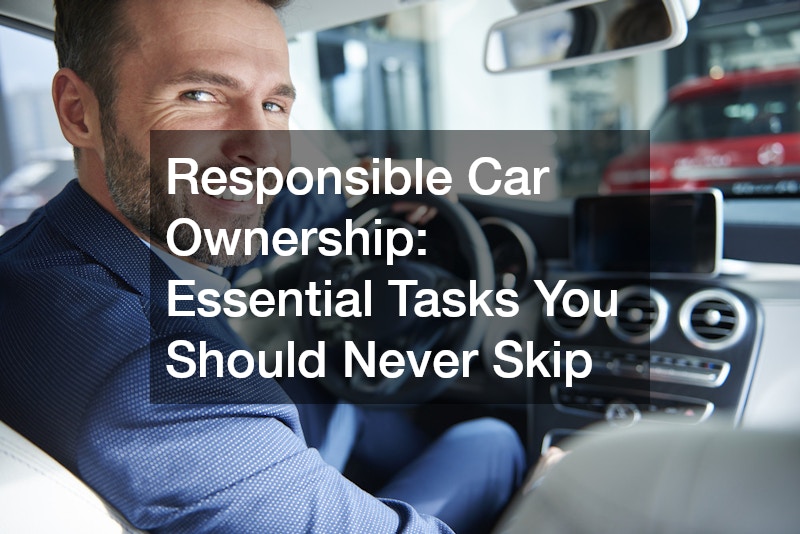Car paint repair might seem like a small cosmetic task, but it plays a big role in maintaining the value, protection and overall look of your vehicle. Whether you’ve just discovered a minor scratch or you’re dealing with more significant damage, having a plan in place helps make the repair process smooth and effective.
This checklist will guide you through everything you need to know to get your car looking like new again.
Assess the Damage Carefully
The first step in any repair process is assessing the severity of the paint damage. Scratches, chips and scuffs can vary greatly in depth and spread. Some surface-level marks can be polished out while deeper ones may require more extensive work. Take a good look under natural light and note whether the damage has reached the primer or metal layer beneath the paint. Knowing what you’re dealing with ensures you don’t overpay for minor fixes or overlook deeper issues that need urgent attention.
Know When to DIY and When to Call a Professional
It can be tempting to reach for a DIY kit, especially for small imperfections. Many auto stores sell touch-up paint pens and polishing tools that work well for light damage. However, more complex issues such as deep scratches, oxidisation or multiple paint layers require professional skills and equipment. Poor DIY attempts can lead to mismatched paint tones or uneven finishes, costing more to fix in the long run. If in doubt, consult a technician who specialises in car paint repair.
Match the Paint Correctly
Paint matching is a crucial part of the process. Most vehicles have a paint code listed on the inside of the driver’s side door or in the owner’s manual. This code allows technicians to find the exact colour used by the manufacturer. Using the wrong shade or guessing the colour can result in patchy work that lowers your vehicle’s appearance and resale value. Whether you’re doing it yourself or hiring someone, accurate paint matching ensures a seamless finish.
Prepare the Surface Properly
Preparation is key for a successful car paint repair. The affected area needs to be clean, dry and free of any wax, oils or rust. If left untreated, rust can spread under the paint leading to further damage. A light sanding may be needed to create a smooth surface before applying any paint or primer. Skipping these steps may result in poor adhesion and a patch that doesn’t hold up over time.
Use Quality Materials and Tools
Using high-quality paint, primer and sealants ensures the longevity of your repair. This is not an area where cutting corners pays off. Professional car paint repair shops typically use top-grade products and tools to guarantee durability and finish. If you’re doing it yourself, don’t rely on generic or low-cost alternatives—read reviews, ask questions and invest in trusted brands that offer consistent results.
Apply Paint in a Controlled Environment
Paint application should take place in a dust-free, temperature-controlled space. Outdoor repairs can be affected by wind, humidity and airborne particles, all of which can impact the final result. Spray paint or touch-up work should be done in calm conditions to avoid drips and streaks. Most professional workshops have enclosed booths designed for optimal conditions but if you’re working at home, do your best to recreate a clean, controlled space.
Don’t Skip the Finishing Steps
Once the paint is applied, it’s not time to call it done just yet. A proper car paint repair includes clear coating, curing and buffing. These finishing touches protect the paint and help blend the new section with the original surface. Some repairs may take several hours or even days to fully cure, depending on the type of paint and environmental conditions. Skipping these steps can lead to fading, cracking or uneven texture.
Follow Up with Aftercare
After your repair is complete, give your vehicle time to settle. Avoid washing or waxing the repaired area for at least 30 days or as advised by the technician. This allows the paint to fully harden and prevents smudging or interference. Keep an eye on the area to ensure no peeling or bubbling occurs, and maintain regular cleaning with gentle non-abrasive products to protect the new finish.
Partner with a Reliable Car Paint Repair Service
Finding a trustworthy workshop for car paint repair can make all the difference. Look for technicians with positive reviews, relevant certifications and experience working on your vehicle’s make and model. Don’t hesitate to ask questions about their process, the products they use or to see examples of past work. A quality repair shop will be transparent and take pride in getting the job done right.
Your car is more than a way to get from A to B—it’s an investment and a reflection of you. Taking the time to follow a thoughtful car paint repair checklist helps preserve that investment and keeps your vehicle looking sharp. From early assessment to careful application and aftercare, each step matters. Whether you choose a DIY approach or trust a local expert, the key is to treat the process with care, attention and patience. In the long run, your car will thank you for it.



